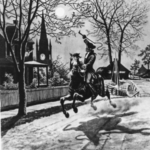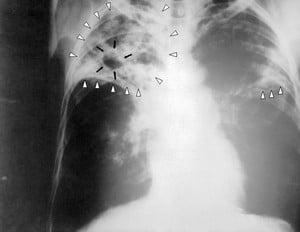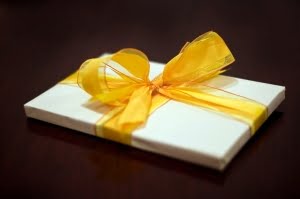How many of you think you know the story of the Winchester Mystery House in San Jose, California? So much fact and fiction have been woven into the story of Sarah Winchester over the years that it is hard to tell which is which. It’s true that her child died a month after her birth, from a childhood disease called marasmus; her husband died 15 years later from pulmonary tuberculosis.
She was supposed to have visited a Boston spiritualist who told her the family was cursed by those killed via the Winchester Repeating Rifle. It was said he suggested she move west and build continuously on a house to avoid the curse. She purchased an eight room farm house already under construction. She threw away the blue prints and drew her own plans. Some say she held séances every night to get the plans from the spirits. One source, Ralph Rambo, who wrote a booklet on his father’s employer, said she had architectural books, magazines, and technical books she used stored in a library.
Questionable is whether her inheritance was $20 million dollars or not. Her father-in-law, Oliver Winchester, founder of the Winchester Repeating Arms Co., was worth $1.5 million dollars in November 1880 when he died. His son died months later on March 7, 1881. Sarah acquired more stock when her mother-in-law died in 1897, giving her 2,000 shares. Sarah owned 48.8% of the company.
It is true that there are many oddities in this 160-room winding maze of a house, many of which can be explained. Yet it is also filled with inventions ahead of their time. She had a servants call box in which she could communicate with a servant from whatever room she was in. It would ring a specific ring for a certain servant. She could talk to them through tubes installed in the walls. She also had three elevators, one electric, to make it easier to move about the house, for both her and the servants.
She had a water tank behind her kitchen stove, which heated the water for the house. She was one of the very few people in America who had indoor plumbing, baths, toilets, and even a shower. The water for the shower was thermostatically controlled. The shower consorted of an upside down u-shaped tube with tiny holes and was set low enough so that Sarah would not get her hair wet when she showered. There are many more inside innovations in the house, all used to make things more convenient for servants and the mistress of the house.
The outside of the house had many innovations as well. She had her own 10,000 gallon water storage tank , used for all the water used on the property. She had a drainage system that began with pipes in the house, draining into the gardens below, and cisterns for storing the water. She also had a dehydrator where she dried the plums to turn them into prunes.
One of three crops she grew in her 141 acres of orchards. She also grew apricots and walnuts. These crops she sold locally, across the United States and to England, and Europe as well. She also had a car wash on the other side of her garage for her Pierce Arrow automobile. Heated water was forced through a rotating tube that was attached to the ceiling. A gas manufacturing plant provided all the gas for the lighting and electricity. She had no utility bills. This seems a very intelligent move for someone who was supposed to be crazy. At the time she lived in the country, three miles west from the town of San Jose. She probably wanted and needed to be self-sufficient.
Some of the explanations for the oddities include the 2″ stairs in part of the house. Mrs. Winchester had arthritis which grew worse in her later years. These 2″ stairs made it easier to get around, as did the elevators. One skylight has slats of painted wood on one end. These were used so that boards could be put across the slats so the servants could wash the windows of the rooms on either side, and the skylight as well. Windows in bathrooms were said to be installed so servants could see if she had fallen, not to peep in on servants.
The chimney that goes to nowhere, stopping inches below the ceiling did work at one time. It was only when she completely roofed in the fourth floor that the chimney became obsolete. There is also a double door in the floor of the conservatory where she grew her plants. This was installed for ventilation purposes. There are many more explanations for these anomalies.
She had a will with 13 parts that was signed 13 times. She gave money to a Trust Company to distribute the remainder of her money ($2.9 million ) to the cemetery she was buried in, in Connecticut. Also to the Visiting Nurses Association in Connecticut and Home for the Friendless in New Haven, CT. Thereafter she gave her money to her sister Isabel, her niece Marian, as well as her other nieces and nephews, and grandnieces and grandnephews also a couple of her servants. When they died the remainder was to be given in increments to the William W. Winchester Hospital, in which she had started years ago in Connecticut, with a lump sum of money. Mrs. Winchester bequeathed all her furniture and belongings to her niece Marian, who had them auctioned off. It took them It took six trucks, working eight hours a day, six weeks to empty the house of the furnishings.
These are just some of the facts about the Winchester Mystery House and the woman behind the building of the Victorian mansion. She is probably one of the most misunderstood women of all time.





